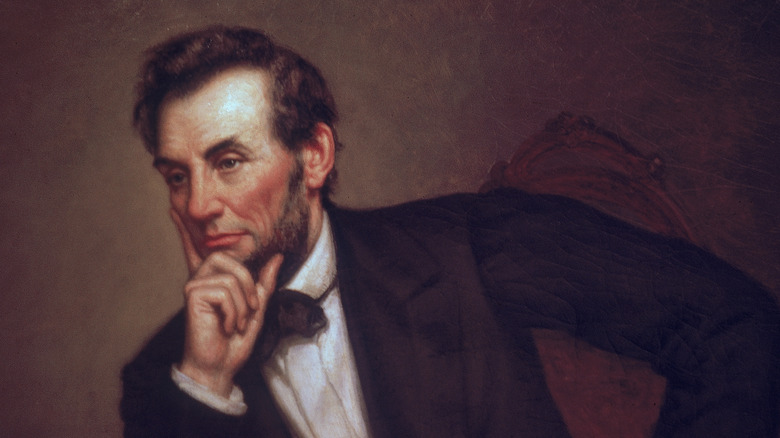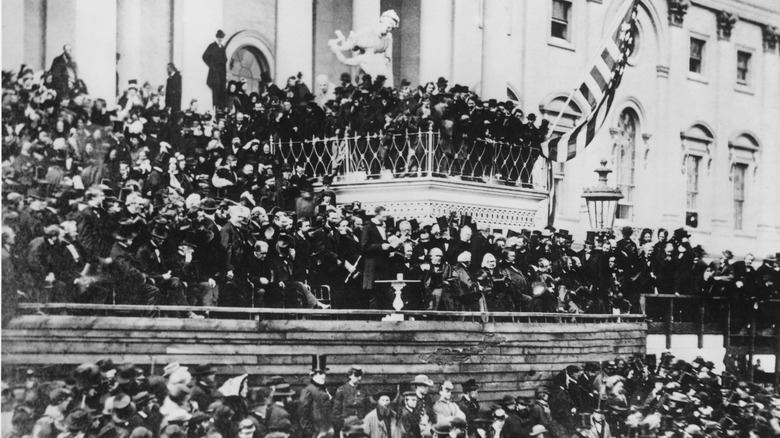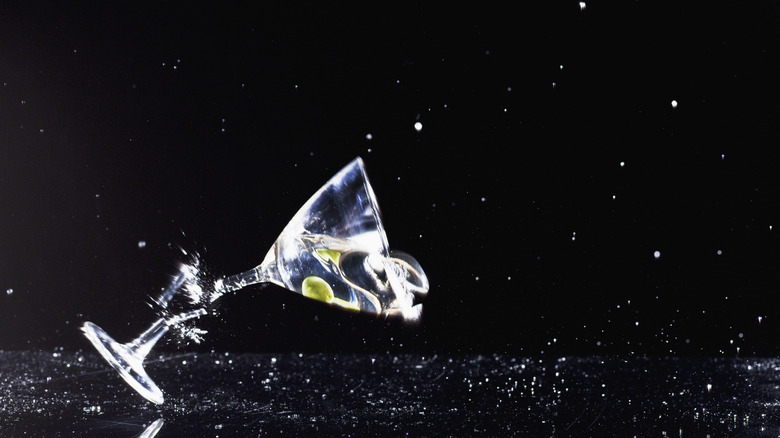What It Was Like To Eat At Abraham Lincoln's Wild Inauguration Party
Presidential inaugurations used to be much more boisterous affairs. These days, it is customary to follow the swearing-in ceremony and inaugural address with a luncheon in the U.S. Capitol. With a few exceptions (such as Joe Biden, who canceled his inaugural luncheon due to the COVID-19 pandemic), this has been the standard ever since the first inaugural luncheon was held in 1897 to honor the incoming President McKinley. Before that, inaugural festivities tended to last much later, and things rarely went smoothly. Andrew Jackson had to sneak through the back door of the White House to escape his violently drunk guests, Ulysses S. Grant celebrated in a room so cold that the champagne froze, and Abraham Lincoln nearly started a food fight.
Lincoln's first inauguration in 1861 went quite well. Poignantly dubbed the "Union Ball," the party was held in a temporary building made just for the occasion and revolved around formal dancing — mostly waltzes and quadrilles. Lincoln's second inauguration party was another story entirely. The Civil War was still not over, and the building from his first inauguration had been converted into housing for Union soldiers. The festivities were moved to Washington, D.C.'s Patent Office Building (now home to the Smithsonian American Art Museum and the National Portrait Gallery), where a lavish buffet was prepared. The only trouble was, they didn't prepare enough.
Lincoln's inaugural menu
Abraham Lincoln's second inaugural ball on March 6, 1865, featured an astounding array of foods. There were four different beef dishes, three veal dishes, four types of poultry, and three different game meats. There was chicken salad, lobster salad, smoked ham, and the controversial foie gras. Appetizers included oysters in two forms — pickled and stewed — in keeping with the 16th president's tastes. Oysters were a common menu item at Lincoln's presidential functions, but he only liked cooked oysters.
The desserts prepared for Lincoln's second inauguration outshone even the lavish array of meats. There were no less than 12 varieties of cakes and tarts, including pound cake, almond sponge, and macaroon tart. These could be paired with six unique types of ice cream, three varieties of sorbet, and 10 different jellies and creams. On top of all this, the menu listed a series of "Ornamental Pyramides," including coconut, orange, macaroon, and nougat. This great spread was furnished by Washington, D.C. confectioner G.A. Balzer, whose crowning achievement was a model of the U.S. Capitol made entirely from sugar.
The model would not survive that night, and in retrospect, it's a wonder that all the guests did. The meal was delayed, not being served until midnight, at which point the roughly 4,000 guests who turned up to celebrate President Lincoln had been drinking and dancing for hours. When the food finally came, there wasn't enough of it to go around, and things got ugly quickly.
An inaugural dinner in shambles
A menu as vast as that of Lincoln's second inaugural ball requires an equally vast buffet serving area, and the event planners seemingly did their duty in setting up a 250-foot table for the occasion. This was intended to serve about 300 people at a time, so it should have worked just fine as long as the guests lined up in an orderly fashion and all 4,000 of them didn't rush the table at once... of course, that's exactly what ended up happening. By the time the buffet was finally served at midnight after the inauguration, the guests were starving (and many of them were surely somewhat tipsy to boot). They rushed the buffet with animalistic fervor, each person so eager to eat that they threw all notions of civility out the window.
Reporting on the inaugural dinner, the New York Times lamented that, "In less than an hour, the table was a wreck," while the Washington Evening Star reported that "The floor of the supper room was soon sticky, pasty and oily with wasted confections, mashed cake, and debris of fowl and meat" (via the National Park Service). As chaos reigned, the glorious sugar sculpture of the Capitol slowly disintegrated on its pedestal.
The sordid dinner party was an ugly end to an otherwise great inauguration. Lincoln's speech that day is widely regarded as the greatest inaugural address in history, and it would prove to be one of the very last public appearances that he would ever make.


